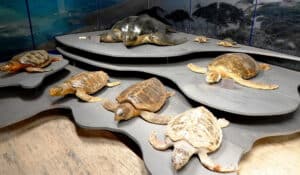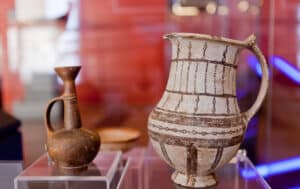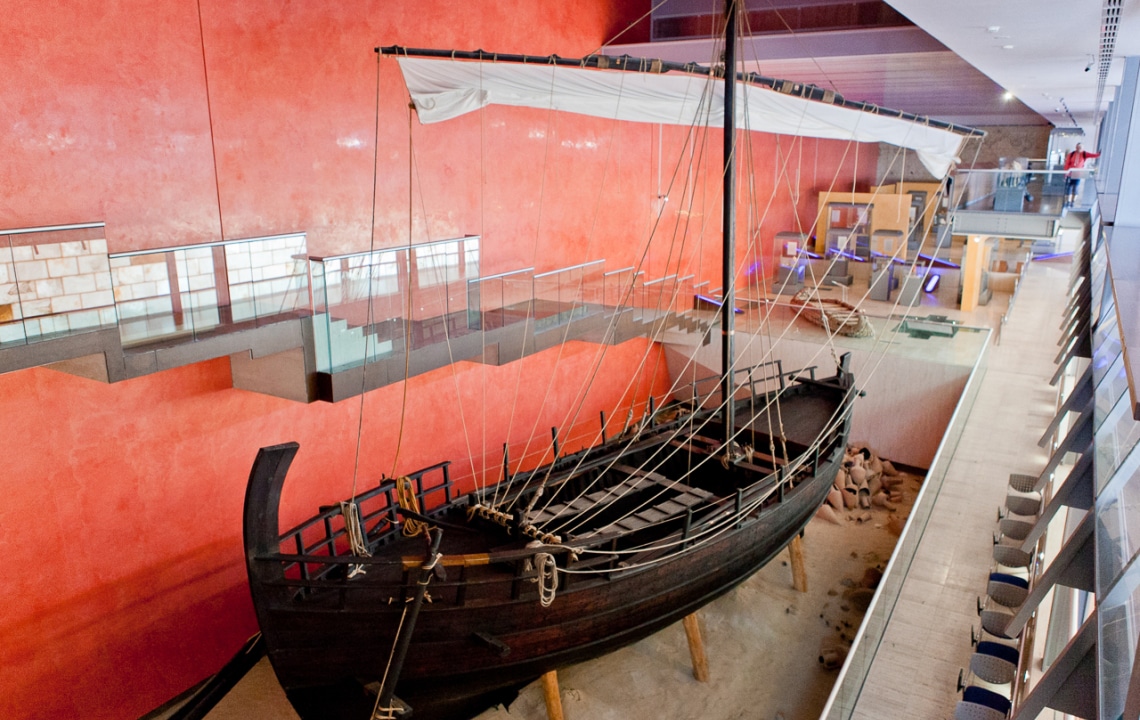The party town of Ayia Napa is also home a museum on the influence of the sea on Cyprus history and culture finds PAUL LAMBIS
Cyprus is a sea lover’s paradise. Although the island is blessed with so much more, the summer season typically represents the season of seaside vacations. And in taking one, many who travel to the eastern side of the island frequently drive past a modern building in the heart of Ayia Napa that has become a landmark even if we drive past it in ignorance.
The Thalassa Municipal Museum is the first of its kind in the Mediterranean, with its primary objective to present the impact and significance of the sea in Cyprus’ history. In fact, the museum, which features exhibits ranging from palaeontology to historical periods until present day, was recognised by the EU in 2008 as one of the most impressive museums in Europe.

“Most visitors are surprised when they enter through our doors to discover unique experiences that appeal to all the senses with a ‘bird’s-eye view’ of the collections displayed.”
The contemporary, interactive museum is a true gem, not only for tourists who visit Ayia Napa or Protaras for their summer holiday, but also for the local community, as it is open all year. According to Kyriacou, since March 2023, the museum’s staff have been extremely active in marketing its collections through special events and workshops organised for children.
“Our weekly workshops, which have been designed for children aged 10 to 12, offer memorable experiences, stimulate their imagination, and allow them to learn about the museum’s large collection of archaeology, marine and natural life antiquities,” Kyriacou said.
The museum’s impressive collections, some dating back 130 million years, include exhibits of late Cretaceous Period fossilised fishes, shells, corals, ammonites and trilobites, as well as marine organisms such as shells, barnacles, corals, sea-urchins, starfish, crabs, lobsters, sponges, marine plants and others that are unique to Cyprus.
There is also a large taxidermy collection of fish, animals, and sea turtles from the Cypriot and Greek seas, as well as a significant collection of sea and lake birds in their native habitat. “It is important to note that not a single specimen was removed alive from its natural environment,” Kyriacou told the Cyprus Mail. “All of the items on display were collected after their natural death.”

The highlight, though, is undoubtedly the life-size reproduction of the ancient Kyrenia II vessel, which dates back to 400 BC. “The Kyrenia II has been exhibited in a number of cities in Greece and around the world, including New York, Japan, Sevilla, and Hamburg,” Kyriacou said.
The replica was built in 1985 for scientific experimental purposes by the Hellenic Institute for the Preservation of Nautical Tradition under the supervision of the leaders of the underwater excavations and preservations of the historical Kerynia shipwreck.
“The vessel is displayed in such a way that it can be viewed from different levels within the museum, including a bird’s-eye view from the upper floor,” she added.

“In addition to the many traditional music events, tributes, art exhibitions and dedicated events that are held at the museum to raise awareness of the island’s occupied regions, we also encourage schools to visit so that they may better understand the overwhelming influence of the sea on history and culture,” Kyriacou said.
If you happen to be in Ayia Napa during the holiday season, or if you want to learn more about the role and importance of the sea in Cyprus history from ancient times to the present, the Thalassa Municipal Museum will undoubtedly impress.







Click here to change your cookie preferences